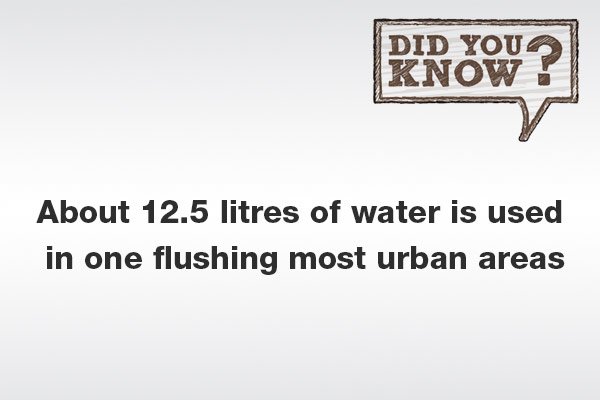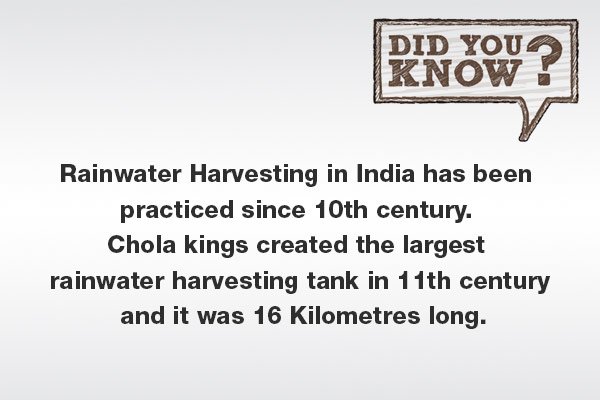The issue of drought and water scarcity can be dated back to ancient times. It is evident from the fact that the construction and use of cisterns to store rainwater was found since Neolithic age – a period 10,200 BC. Water is a lifeline – it was the source of development of the early living organism and also, the site for flourishing civilization (Referring to Indus Valley Civilization). Modern-day India is staunchly working for inducing modern technologies and ideas in rainwater harvesting (RWH) since the demand of fresh water supply seems to be never fulfilling. It is partly because of increase in population and partly due to heavy advancement in industries. This means rainwater harvesting in India will stay till the civilization last.
Ancient to Modern Methods of Rainwater harvesting
It is fascinating to know that the methods practiced by civilizations in the Indus Valley for rainwater harvesting were far more advanced than we might think. Huge vats were used to serve the population and local vegetation during hot and dryer times. These vats were fed by numerous stone gullies that weaved their way through the city. These stone gullies were cut into the rock to collect water in case of torrential rainfall.
Building water harvesting systems on top of the roofs of houses in India can be traced back to hundreds of years. In fact, there are a variety of ancient methods which are still prevalent today, of course with changed names:
- Talibs: Medium to large-sized reservoirs used for irrigation of plants and drinking.
- Johads: Dams to collect and preserve rainwater.
- Baoris: Wells dug into the ground to attain groundwater and drained out for agricultural, industrial and household use.
- Jhalaras: Tanks constructed especially for the use by local community and religious purposes.
The modern methods of rainwater harvesting are more sophisticated and researched. Harvesting in urban areas is more focused on rooftop rainwater/storm runoff by using recharge pit, recharge trench, tubewell and recharge well; while the harvesting in rural areas is mainly done through Gully Plug, Contour Bund, Gabion Structure, Percolation Tank, Check Dam/Cement Plug/Nala Bund, Recharge Shaft, Dugwell Recharge or borewell recharge, Ground Water Dams/Subsurface Dyke.
Potential for Rainwater Harvesting in India
The diversity of climate, temperature and geography in India makes it obligatory to understand the potential of rainwater harvesting. Every city or land area is not favorable enough to support this beneficial process of harnessing rainwater.
There are some simple mathematical calculations being done for getting an amount of total water that can be harvested successfully. Firstly, calculate the total volume of water received by using the formula:
Area of catchment (sq. mt.) X Amount of Rainfall = Volume of water received (cu.m.)
This volume of rainfall which is received over an area is called as rainwater endowment of the area. Out of this, the amount that qualifies for effective harvesting makes up the water harvesting potential.
The rainwater harvesting potential is influenced by two major factors:
a. RainFall
- The amount of rainfall received by an area is unpredictable. The only way to know the rainwater supply potential of the area is to gather reliable rainfall data for at least last 10 years period and the data will be better if collected from the nearest station with comparable conditions.
- The rainfall pattern is also a deciding factor here; fewer the annual rainy days or longer the dry period, the more need is for collecting rainwater in the region. Groundwater aquifer recharge is the most suitable option for such regions.
b. Catchment area characteristics
The choice and features of catchment surface being used for harvesting rainwater is another deciding feature. A mathematical formula is proposed as under
Water harvesting potential = Rainfall (mm) x Area of catchment x Runoff coefficient
The Runoff coefficient here accounts for the loss of rainwater due to spillage, leakage, infiltration, surface wetting and evaporation. The value of this coefficient is being set by researchers based on the type of catchment surface being used for collecting rainwater.
Rainwater Harvesting projects in India
The great Bengal famine of 1770 swept away about one-third of the then population of Bengal. Between the period of 1770- 1944, India witnessed 12 severe famine which resulted in the loss of around 40 million people altogether. To save lives, the post-independence government has launched rainwater harvesting projects at national and local levels.
CENTRAL GROUND WATER BOARD (CGWB) is a unit which works under Ministry of Water Resources and has implemented following plans for RWH:
“Study of Recharge to Groundwater” – construction of recharge structures in areas experiencing water scarcity, surplus monsoon runoff and ground pollution.
“Rain Water Harvesting and Artificial Recharge to Groundwater” – over-exploited ground water in hard-rock areas of four states Andhra Pradesh, Tamil Nadu, Karnataka and Madhya Pradesh were focused.
“Groundwater Management & Regulation” – sustainable ground water management in urban areas showing a steep decline in the groundwater table, drought-prone areas, the coastal and mountainous terrain of India.
Artificial Recharge to Groundwater through Dugwells – recharging dugwells near existing water wells for over-exploited, critical and semi-critical areas in the States of Andhra Pradesh, Karnataka, Madhya Pradesh, Maharashtra, Rajasthan, Tamil Nadu and Gujarat. Preservation was handled in association Panchayati Raj Institutions (PRIs), CGWB, NABARD, NGOs etc.
Find your RWH solutions at Chaitanya
CHAITANYA RAIN HARVEST PRODUCTS & SYSTEMS PVT. LTD. is a trusted name in rainwater harvest services and products. The services include preparation of rainwater harvesting reports, designing rainwater harvesting layout, designing detailed engineering drawings, conducting hydrogeological and borewell surveys and providing feasibility reports. The company’s RWH product line includes:
- APOLLO Vee-Wire Filter Screen Kit – most modern filtration systems for rainwater harvesting product.
- Fibre-reinforced plastic (FRP) Roof rainwater drainage gutters
- Authorised distributorship of U Channels Pipes and fittings in Maharashtra for Hycount Group of Industries
- Gravels of size ranges from 5mm to 10mm used for filling the borewell pit and other RWH systems.
- Precasted RCC Hume Pipes collar rings are available in 3 feet, 4 feet and 5 feet outer diameter sizes.




1 thought on “Rainwater Harvesting in India – Save it before you Regret it”